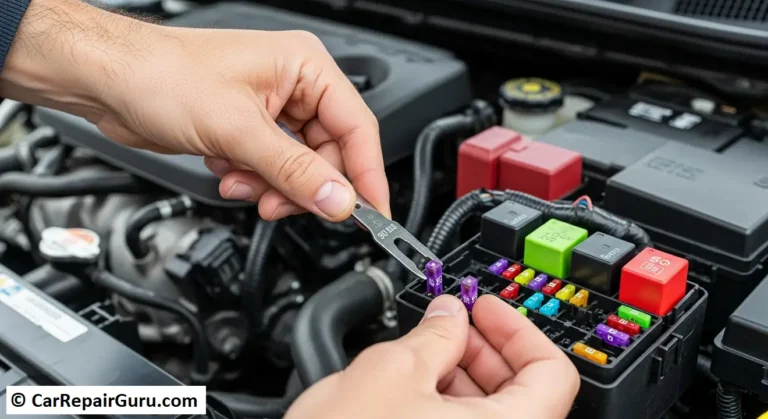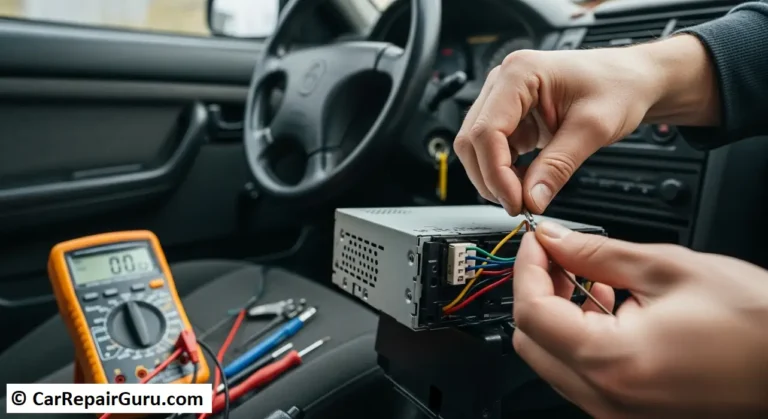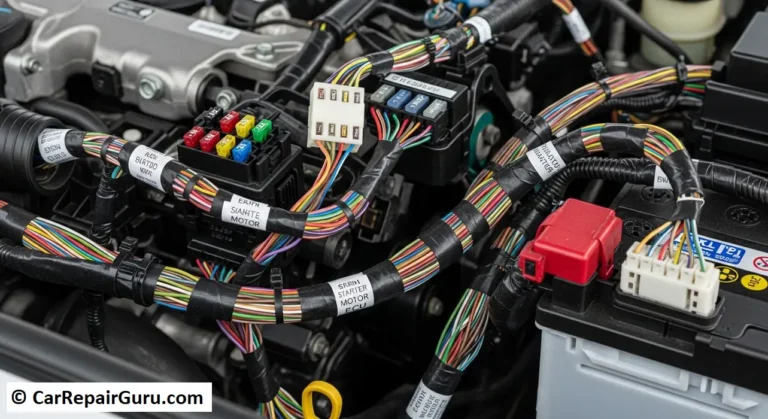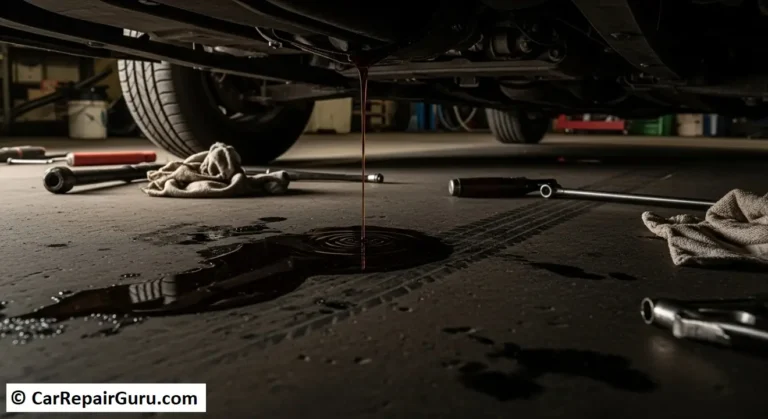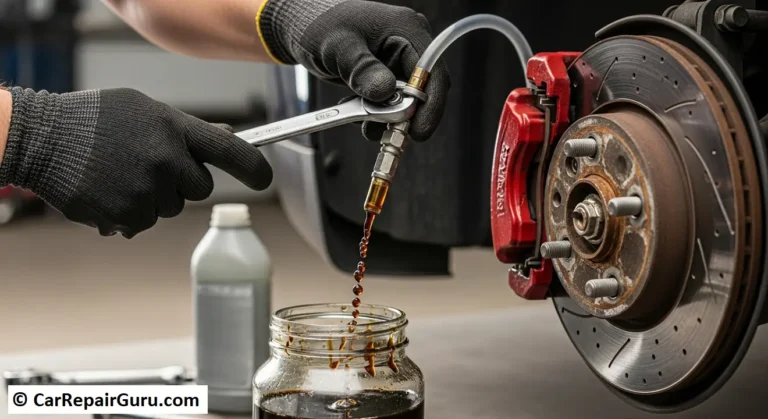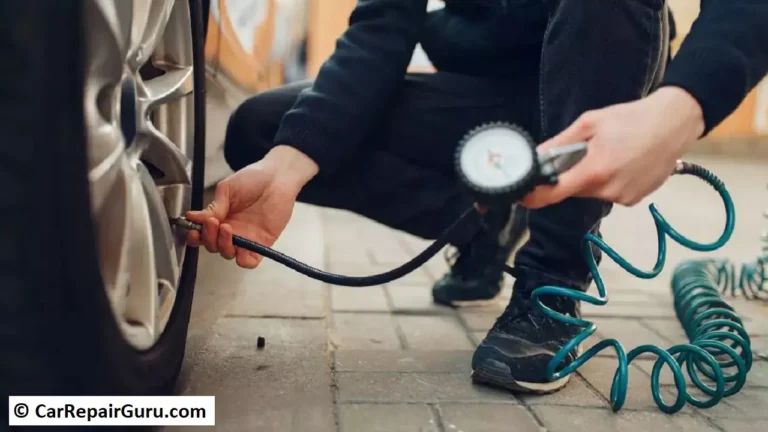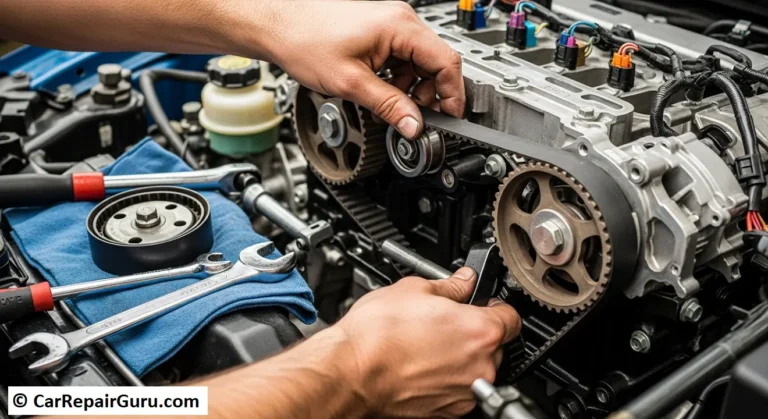
It’s a moment every driver dreads. You get in your car, turn the key, and instead of the familiar roar of the engine, you get… a single, loud click. Or maybe a strange grinding noise. Or worst of all, complete silence. That sinking feeling in your stomach is universal. Your plans for the day have just hit a major roadblock, and your car is refusing to cooperate.
While many people immediately assume a dead battery is to blame, the real culprit is often another critical component: the starter motor.
So, what is a starter motor? Think of it as the ignition’s muscle. It’s a small but powerful electric motor whose only job is to give your engine the initial spin it needs to start the combustion process and run on its own. Without a healthy starter, your engine will never turn over, no matter how much life your battery has left.
This definitive guide will walk you through everything you need to know. We’ll cover the telltale bad starter symptoms, help you perform simple tests to confirm your suspicion, and explain your options for starter motor repair and replacement, so you can get back on the road.
The Top 7 Signs of a Bad Starter Motor
A failing starter rarely dies without warning. It usually gives you clues that trouble is brewing. If you notice any of these signs, it’s time to pay attention.
1. The Single, Loud “Click”
This is the most classic and common sign of a bad starter. You turn the key, and you hear one sharp “CLICK” from the engine bay, but nothing else happens. This sound is the starter solenoid (a powerful electromagnet) engaging, which means it’s receiving power from the battery. However, the starter motor itself is failing to spin the engine. The click tells you power is getting there, but the work isn’t getting done.
2. Grinding or Whirring Noises
If you hear a harsh, metallic grinding noise when starting your car, it’s a major red flag. This often means the gear on the starter motor (called the Bendix drive) is failing to properly mesh with the teeth on the engine’s flywheel. This can cause damage to both components.
A related sound is a high-pitched whirring noise. This happens when the starter motor is spinning, but the Bendix drive isn’t extending to engage the flywheel at all. In either case, the engine isn’t turning over, and the sound is your starter crying for help.
3. Intermittent Starting Issues
Does your car start perfectly one day but refuse to start the next, only to work again later? This maddening inconsistency often points to “dead spots” on the starter motor’s internal electrical contacts. When you turn the key, if the motor stops on one of these dead spots, it won’t work. Trying again might land it on a good spot, allowing the car to start. While you might get away with it for a while, this is a clear sign that complete failure is imminent.
4. Dashboard Lights Are On, But No Crank
This is a critical diagnostic clue. You turn the key, and your dashboard lights, radio, and headlights all come on at full brightness, but the engine makes no attempt to crank. This tells you the battery has plenty of power. The problem is that the power isn’t making it through the starter motor to turn the engine. If your lights are on but the car won’t start, the starter is a prime suspect.
5. Smoke or a Burning Smell
If you see or smell smoke coming from under the hood when trying to start your car, stop immediately. This is a serious issue. Smoke indicates the starter motor is overheating, likely due to a continuous power flow from a stuck switch or a severe electrical short. Continuing to try and start the car can cause a fire.
6. Starter Stays On After the Engine Starts
Once the engine is running, the starter’s job is done. If you hear a high-pitched whining or grinding sound that continues after the engine has started, it means the starter’s solenoid is stuck and the motor hasn’t disengaged from the flywheel. This is incredibly damaging and can destroy both the starter and the flywheel teeth in a very short time. If you hear this, shut the engine off immediately and have it towed.
7. Oil-Soaked Starter
While not a symptom you’ll hear, this is a common cause of failure discovered during inspection. A slow oil leak from a valve cover gasket or other component directly above the starter can cause oil to seep into its housing. This oil contaminates the electrical components and leads to premature failure.
Simple DIY Starter Tests (Before You Call a Mechanic)

Before you commit to a repair, you can perform a couple of simple tests to be more certain about the problem.
- The Battery Terminal Check: Pop the hood and look at your battery. Are the terminals clean and shiny, or are they covered in fuzzy, white, or blueish corrosion? A poor connection here can prevent the massive amount of current the starter needs from getting through. Clean the terminals with a wire brush and ensure the clamps are tight. Sometimes, this simple fix is all you need.
- The “Tap” Test (Use with Caution): If you can safely locate and reach your starter motor, you can try this old-school trick. Have someone turn the key to the “start” position while you give the starter’s casing a few firm taps with a small hammer or a wrench. This can sometimes jostle the internal components just enough to overcome a dead spot. If the car starts, you’ve confirmed the starter is failing. Disclaimer: This is a diagnostic tool, not a permanent fix. Its only purpose is to confirm the problem.
- The Headlight Test: This is a fantastic way to differentiate between a battery and starter issue. Turn your headlights on before you try to start the car.
- If the headlights dim significantly or go out when you turn the key, your battery is likely weak and doesn’t have enough power.
- If the headlights stay strong and bright while the starter just clicks or does nothing, the battery is fine. The power isn’t being used because the starter has failed.
Is It the Starter, the Battery, or the Alternator?
It’s the ultimate question when your car won’t start. Here’s a simple cheat sheet to tell them apart:
- Bad Starter:
- Lights and electronics work at full strength.
- You hear a single, sharp click or a grinding noise.
- A jump-start does NOT work.
- Dead Battery:
- Lights are dim, flickering, or completely off.
- You hear a rapid, machine-gun-like clicking sound, or nothing at all.
- A jump-start DOES work.
- Bad Alternator:
- The car often starts (perhaps with a jump) but then dies while running.
- The “battery” or “ALT” warning light is illuminated on your dashboard.
- Your headlights may flicker or grow dim as you drive.
What Causes a Starter Motor to Fail?
Starters are robust, but they aren’t invincible. Understanding the common causes of failure can help you appreciate why replacement is often necessary.
- Normal Wear and Tear: The internal brushes, bearings, and contacts wear down over tens of thousands of starts. Eventually, they just reach the end of their service life, usually between 100,000 and 150,000 miles.
- Failed Solenoid: The solenoid is a high-stress component that acts as both a relay and a mechanical actuator. It’s often the first part of the starter assembly to fail.
- Loose or Corroded Connections: A bad connection at the battery or the starter itself can cause high electrical resistance, leading to overheating and component failure.
- Fluid Contamination: As mentioned, engine oil or coolant leaks are a leading cause of premature starter death.
- Flywheel or Flexplate Issues: If the teeth on the engine’s flywheel are damaged, they can chew up the starter gear, causing the grinding noise and eventual failure.
Starter Motor Repair vs. Replacement – What’s the Best Option?
When your starter fails, you have two theoretical paths: repair or replace.
For most modern passenger cars, replacement is the standard and most practical solution. A mechanic can swap out the entire unit relatively quickly, getting you back on the road with a reliable part that often comes with a warranty.
A starter motor repair, or a “rebuild,” involves disassembling the starter and replacing only the specific internal components that have failed. Due to the high labor costs involved, this is rarely economical for standard vehicles. It’s typically reserved for classic cars, heavy-duty trucks, or rare vehicles where new or remanufactured units are not readily available.
When choosing a replacement, you’ll have two main options:
- New Starter: An OEM or aftermarket part that is brand new. This is usually the most expensive option.
- Remanufactured Starter: A used starter core that has been completely disassembled, cleaned, inspected, and rebuilt with new wear-and-tear parts (like brushes, bearings, and the solenoid). High-quality remanufactured starters are a reliable and cost-effective alternative.
Understanding Starter Motor Replacement Cost

So, how much to fix a starter? The starter replacement cost is broken into two parts: the part itself and the labor to install it.
- Part Cost: A new or remanufactured starter can range from $100 to over $400, depending on your vehicle’s make and model.
- Labor Cost: This is the biggest variable, typically ranging from $150 to $500 or more. Why the wide range? It all comes down to accessibility. On some 4-cylinder engines, the starter is right on top and takes an hour to replace. On many V6, V8, or transversely mounted engines, the mechanic may need to remove exhaust manifolds, drive axles, or other components just to reach it, turning it into a 3-4 hour job.
Overall, you can expect the total starter motor repair price to be anywhere from $250 to $900, with most common vehicles falling somewhere in the middle of that range.
Don’t Get Stranded – Act on the Signs
A failing starter gives you warning signs for a reason. Ignoring that initial click, the intermittent starting problem, or the grinding noise is a gamble that rarely pays off. The problem will not fix itself, and it will almost certainly leave you stranded at the most inconvenient time possible.
By understanding the symptoms and knowing how to differentiate them from a simple battery issue, you can take control of the situation.
If you’re experiencing any of the signs discussed in this guide, your next step is clear. Contact a certified auto repair shop for a professional diagnosis. A small investment in a diagnostic check and a timely replacement can save you the major headache, cost, and stress of a breakdown. Get it fixed, and get back on the road with confidence.
Frequently Asked Questions About Starter Motors
How long does a starter motor last?
A typical starter motor lasts between 100,000 and 150,000 miles. This lifespan can be shorter if you make frequent short trips (which means more starts per mile) or if it’s exposed to harsh conditions or fluid leaks.
Can a bad starter drain a battery?
Absolutely. A starter with an internal electrical short can create a “parasitic draw” that slowly drains your battery even when the car is turned off. Furthermore, repeatedly trying to start a car with a faulty starter will quickly deplete a perfectly good battery.
Can you jump-start a car with a bad starter?
No. A jump-start is a solution for a dead battery; it provides the electrical power your system is missing. If the starter motor is mechanically broken or has a failed solenoid, all the extra power from a jump-start won’t be able to make it work.
How long does it take to replace a starter?
For a professional mechanic, a starter replacement can take anywhere from 1 to 4 hours. The exact time depends entirely on the vehicle’s design and how difficult it is to access the starter’s location.
Is a remanufactured starter as good as a new one?
Yes, a high-quality remanufactured starter is a very reliable and smart financial choice. These units are rebuilt to meet or exceed original factory standards and almost always come with a warranty, offering peace of mind at a lower price point.
